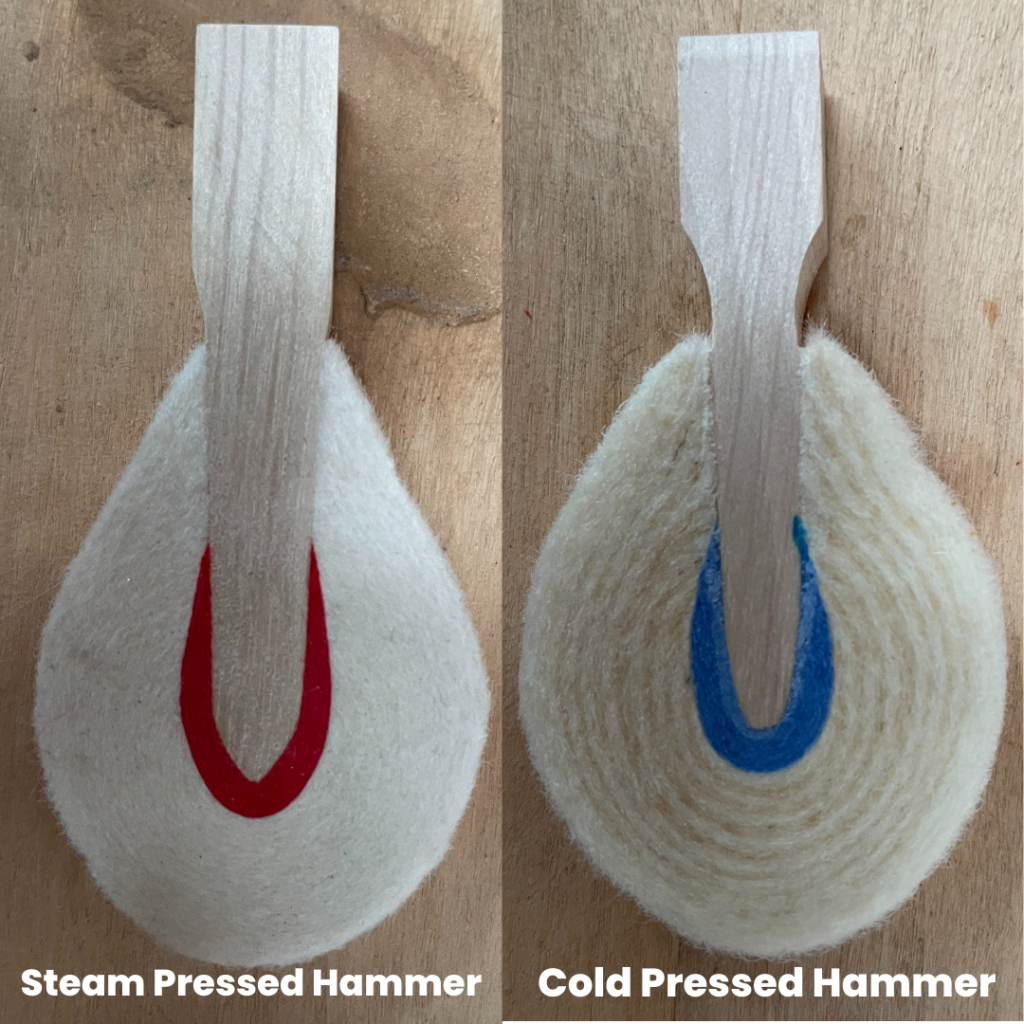
Piano tone is generally related to what you grew up listening to. If you have grown up listening to Yamaha pianos, then generally that’s the tone that you like. If you’ve grown up listening to a Kawai piano, then that’s the tone that you like. If you’ve grown up listening to an old-style piano, then that’s the tone that you are drawn to. So, there is no good or bad tone of pianos there is just tone.
When you are wanting to purchase a piano, you will be drawn to the tone of the piano that you relate to as you have grown up.
Cold Pressed Hammers
As a piano tuner, we can tune the voice of a piano from a harsh tone to a more mellow tone, but it all depends on the quality of the striking hammer as to the tone we can achieve. Old-style pianos have cold-pressed hammers. These are generally very easy to voice as the fibres are not packed as tightly in the hammer. These are typically found in American and European pianos and provide a softer but warmer tone.
Steam Pressed Hammers
Alternatively, pianos made in Korea and Japan use steam press hammers which create more tightly packed fibres in the hammer. This gives a very bright sound. Generally, Asian communities go for steam pressed hammer pianos and bright sound as it replicates the culture’s voice Asian communities have a very high tone of language. Whereas European communities come from the pipe organ and lower voice.
Typically, more expensive pianos have a lower tone voice with a deeper, richer sense. Because of this, there is a shift away from steam pressed hammers, back to cold-pressed hammers. Hammer manufacturers like Arbel have reverted to using cold-pressed hammers as replacement hammers for pianos.
So why do you relate to one piano and not to another?
My belief is that there is a piano for every person, and you relate to that piano and tone.
The touch also has a bearing on it but that’s another story.

